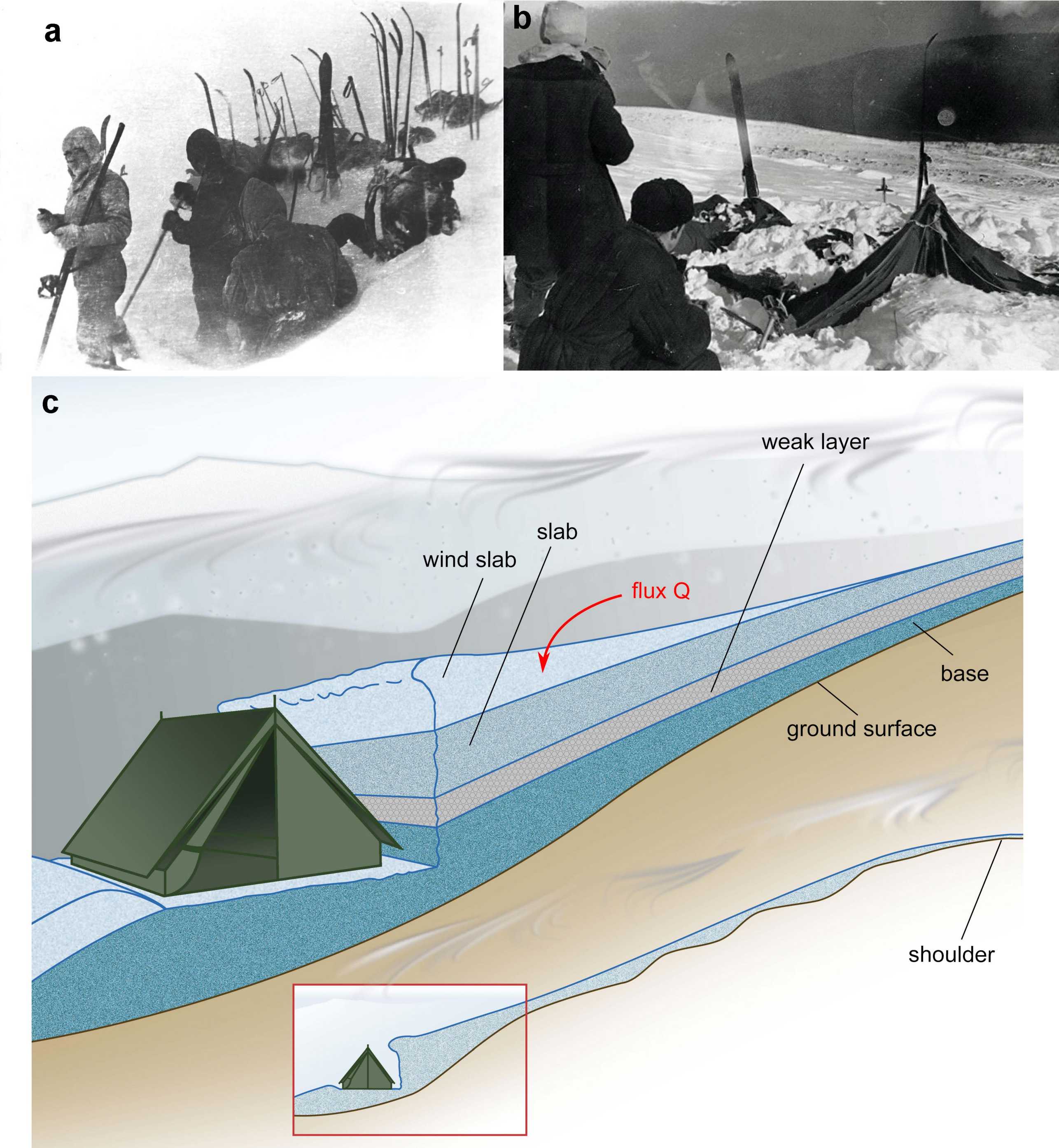Mechanisms of slab avalanche release and impact in the Dyatlov Pass incident in 1959
2019 - 2022
The Dyatlov Pass incident is an intriguing unsolved mystery from the last century. In February 1959, a group of nine experienced Russian mountaineers perished during a difficult expedition in the northern Urals. A snow avalanche hypothesis was proposed, among other theories, but was found to be inconsistent with the evidence of a lower-than-usual slope angle, scarcity of avalanche signs, uncertainties about the trigger mechanism, and abnormal injuries of the victims. The challenge of explaining these observations has led us to a physical mechanism for a slab avalanche caused by progressive wind-blown snow accumulation on the slope above the hikers’ tent. Here we show how a combination of irregular topography, a cut made in the slope to install the tent and the subsequent deposition of snow induced by strong katabatic winds contributed after a suitable time to the slab release, which caused severe non-fatal injuries, in agreement with the autopsy results.


Funding
Swiss National Science Foundation (grant numbers PCEFP2_181227 and 200021_168998)
Researchers
Prof. Dr. Johan Gaume
Prof. Dr. Alexander M. Puzrin
Publications
Contact
Head of Institute for Geotechnical Engineering
Institut für Geotechnik
Stefano-Franscini-Platz 5
8093
Zürich
Switzerland
